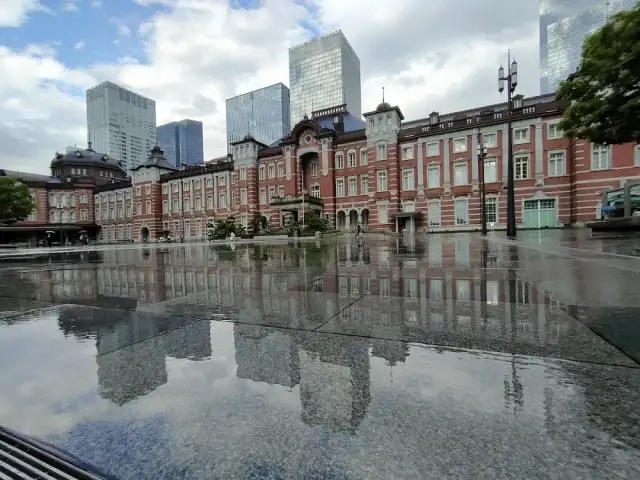https://www.dekitabi.com/itinerary/tokyo-station-imperial-palace-walking-tour
When visiting Tokyo, the vibrant capital of Japan, there are three iconic sites that should be on every traveler’s itinerary: Tokyo Station, Hibiya Park, and the Imperial Palace East Gardens. These locations offer a blend of historical significance, natural beauty, and modern convenience, making them perfect for anyone wanting to experience the essence of Tokyo.
Tokyo Station: A Gateway to Japan

https://www.dekitabi.com/attraction/tokyo-station-japan
Tokyo Station is more than just a transportation hub; it is a symbol of Japan’s modernization and a testament to the country’s architectural ingenuity. Opened in 1914, Tokyo Station is one of the busiest railway stations in the world, connecting travelers to various parts of Japan through the Shinkansen (bullet train) lines, as well as numerous local and regional trains.
The Marunouchi Building, the historic red-brick façade of Tokyo Station, is a must-see for architecture enthusiasts. The building underwent extensive restoration and was reopened in 2012, maintaining its original grandeur while incorporating modern amenities. The station’s dome ceilings, adorned with intricate designs, are a visual treat that transport visitors back in time.
For shopping and dining, the Tokyo Station Underground Mall offers a plethora of options. From traditional Japanese cuisine to international fare, there is something to satisfy every palate. Character Street is especially popular among families, featuring shops dedicated to beloved Japanese characters such as Hello Kitty and Pokémon.
To truly appreciate the history and significance of Tokyo Station, a visit to the Tokyo Station Gallery is recommended. This art museum, located within the station, showcases exhibitions ranging from contemporary art to historical artifacts, providing visitors with a cultural and educational experience.
Hibiya Park: An Urban Oasis

https://www.dekitabi.com/attraction/hibiya-park
Just a short walk from Tokyo Station, Hibiya Park offers a serene escape from the bustling city. Opened in 1903, it was the first Western-style park in Japan and remains a beloved green space for both locals and tourists. The park spans over 40 acres and is home to a diverse array of flora, making it a haven for nature lovers.
One of the park’s highlights is the Large Fountain, which is a popular spot for relaxation and photo opportunities. The fountain’s rhythmic display of water jets, set against the backdrop of the lush greenery, creates a calming atmosphere. Nearby, the Hibiya Open-Air Concert Hall hosts a variety of performances throughout the year, ranging from classical music to contemporary acts.
For those interested in botany, the Hibiya Park Flower Garden is a must-visit. This section of the park showcases seasonal flowers, including roses, tulips, and cherry blossoms, providing a colorful spectacle year-round. The park also features several historic monuments and statues, such as the Shisei Kaikan Building and the Hibiya Mitsuke Gate, which offer glimpses into Tokyo’s past.
Hibiya Park is also known for its annual events and festivals. The Hibiya Park Gardening Show and the Tokyo Christmas Market are just two examples of the many activities that draw crowds to the park. These events highlight the park’s versatility as a venue for both leisure and cultural events.
Imperial Palace East Gardens: A Royal Retreat

https://www.dekitabi.com/attraction/the-east-gardens-of-the-imperial-palace-tokyo
Adjacent to Hibiya Park, the Imperial Palace East Gardens are a part of the larger Imperial Palace complex, the primary residence of the Emperor of Japan. The East Gardens are open to the public and offer a rare glimpse into the imperial heritage of Japan. Spanning over 52 acres, the gardens are a perfect blend of traditional Japanese landscaping and historical architecture.
The main entrance to the East Gardens is the Otemon Gate, an imposing structure that once served as the principal gate to Edo Castle. As you pass through the gate, you are transported into a world of tranquility and beauty. The gardens are meticulously maintained and feature a variety of landscapes, including traditional Japanese gardens, open lawns, and wooded areas.
One of the main attractions within the East Gardens is the Ninomaru Garden. This beautiful garden is designed in the traditional Japanese style, with winding paths, stone lanterns, and koi-filled ponds. The garden is particularly stunning during the cherry blossom season and autumn when the foliage transforms into a tapestry of vibrant colors.
The Museum of the Imperial Collections, also known as the Sannomaru Shozokan, is located within the East Gardens. This museum houses an extensive collection of art and artifacts belonging to the Imperial family, including calligraphy, paintings, and ceramics. The exhibits provide a fascinating insight into the cultural heritage of Japan and the history of the Imperial family.
The Tenshudai, the foundation of the former Edo Castle tower, is another significant site within the East Gardens. Although the original tower was destroyed in the 17th century, the foundation remains a testament to the grandeur of the former castle. From the top of the Tenshudai, visitors can enjoy panoramic views of the gardens and the surrounding cityscape.
The East Gardens also feature several tea houses, such as the Suwa-no-Chaya, where visitors can experience traditional Japanese tea ceremonies. These tea houses provide a peaceful setting to relax and reflect, surrounded by the natural beauty of the gardens.
Conclusion
Tokyo Station, Hibiya Park, and the Imperial Palace East Gardens each offer a unique experience that highlights different aspects of Tokyo’s rich history and culture. Whether you are an architecture enthusiast, a nature lover, or a history buff, these sites provide a perfect introduction to the heart of Tokyo. As you explore these iconic locations, you will gain a deeper appreciation for the city’s blend of tradition and modernity, making your visit to Tokyo truly unforgettable.


Leave a Reply